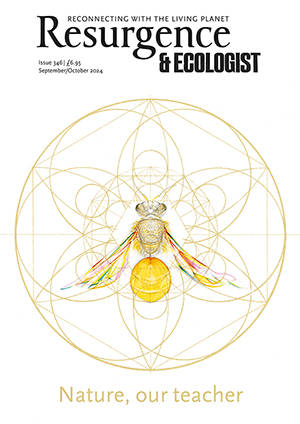You will have heard of the 15-minute city. But what you have been told about them will depend on who you have been listening to. For green-minded politicians and campaigners, they are a commonsense way of making life better in cities while slashing congestion and carbon. For many on the radical right, they are the blueprint for a globalist plot of coercive control over our movement and choices. Few policies in recent memory have been subjected to such wilful distortions, misinterpretations and deliberate attempts at polarisation. It is welcome, then, to cut through the noise with a book from Carlos Moreno and to hear directly from the concept’s creator.
The basic principle of a 15-minute city is that everyone should be able to access life’s key amenities within 15 minutes’ walking or cycling distance from their home. Moreno embeds this ideal into the practicalities of urban planning, pointing to the Athens Charter of the 1930s as the inflection point after which our cities became places of sprawling commutes and fragmentation through the very deliberate organisation of urban spaces into isolated ‘zones’ for different social and economic purposes.
Moreno has realised his vision with an astonishing degree of rapid success, owing to the Covid-19 pandemic, during which cities around the world scrambled to provide more space for walking and cycling. Since then, many have continued to pursue investment in active travel, often taking action on private car use in line with climate goals.
Reading this breathlessly upbeat and optimistic book, you would think that 15-minute cities had enjoyed the forward march of success completely unopposed. And while it is true that traffic reduction policies are almost always overwhelmingly popular with the public, it is certainly not the case that there has been no political opposition to these ideas.
The absence of discussion about resistance and the increasing politicisation of this issue is a puzzling omission. Given that Moreno explicitly situates the rise of 15-minute cities within a timeline accelerated by Covid-19, it is particularly odd that he seems wholly unconcerned with the countervailing trend running on parallel tracks: the attendant rise of climate disinformation. And few green policies have captured the imagination of radicalised conspiracists quite like the 15-minute city.
The result is, at times, a framing that takes no account of any opposing views or reasonable concerns private car users might have about policies that seek to restrict their use. This is especially so of the tone sometimes taken about the pandemic, implying that life in 2020 primarily revealed something profound about how we ought to be living.
Marshalled in service of the call to ‘build back better’, the aims are doubtlessly laudable. But they also have the faint feeling of gaslighting the public: ignoring the blunt truth that, for most of us, the social and psychological conditions imposed by the pandemic were a waking nightmare. When life under lockdown is presented as the pathway to a better way of living, it is little wonder that a backlash is provoked.
There were moments reading this book when even I felt a little penned in. One of the great joys of my life is the feeling of hurtling across the vastness of London from location to location, moving relatively quickly and cheaply through its extensive and diverse TfL network. But there are times when Moreno valorises what he calls “hyper-proximity” to the extent that you cannot help but feel he is actually demonising connectivity and travel.
In my view, the best visions of a low carbon, low traffic city are those that expand our sense of freedom and broaden our choices for connectivity. The 15-minute city’s selling point is the convenience of having the essential amenities of life on your doorstep – saving hours for the people who are most time poor, enhancing our sense of place, calming our roads, cleaning our air and protecting our climate. To his credit, Moreno paints a passionate and compelling picture of this vision.
At times, however, he tips into a transport primitivism of sorts, giving the sense that it is travel itself that is his enemy, and that it is some lost, slower pace of life that he most wants to restore. At its heart the 15-minute city is a small-‘c’ conservative idea, seeking to recapture a close-knit sense of place, revitalised high streets, and knowing the names of the people who live on your road. But rather than appealing to people who might have nostalgia for an imagined past of a few decades ago, Moreno sometimes seems to yearn to go back centuries.
The final hundred pages take us on a tour around the world from city to city, showcasing where these ideas are taking root. We see public spaces that used to be dominated by polluting, private vehicles. Buildings that are used round the clock rather than sitting empty most of the week. Communities that are closer. But these chapters read like official impact reports from municipal governments, packed with fancy diagrams and architectural drawings. You’re dying for him to meet people, find out what it’s actually like to live in these places and, crucially, face the opposition head-on.
To be fair, the creator of the 15-minute city is not the person best placed to apply real journalistic rigour to the concept. It’s hard to begrudge Moreno the opportunity to simply put the case for his policy platform without feeling the need to give succour to bad faith actors who trash his work. All the same, you come away from this book feeling like you’ve learned about 15-minute cities from behind glass windows, atop city halls around the world, looking down on the landscape from the perspective of the policymaker rather than the pedestrian. I’d like to have spent more time down on the streets.
The 15-Minute City: A Solution to Saving Our Time and Our Planet by Carlos Moreno. Wiley, 2024. ISBN: 9781394228140.






